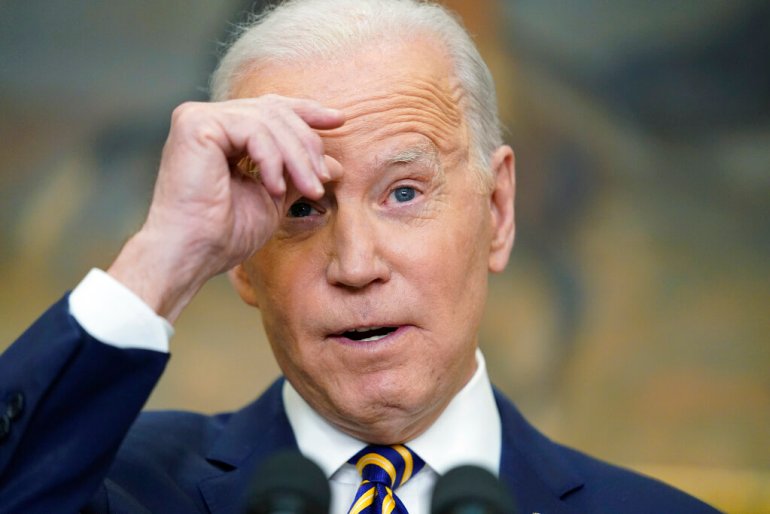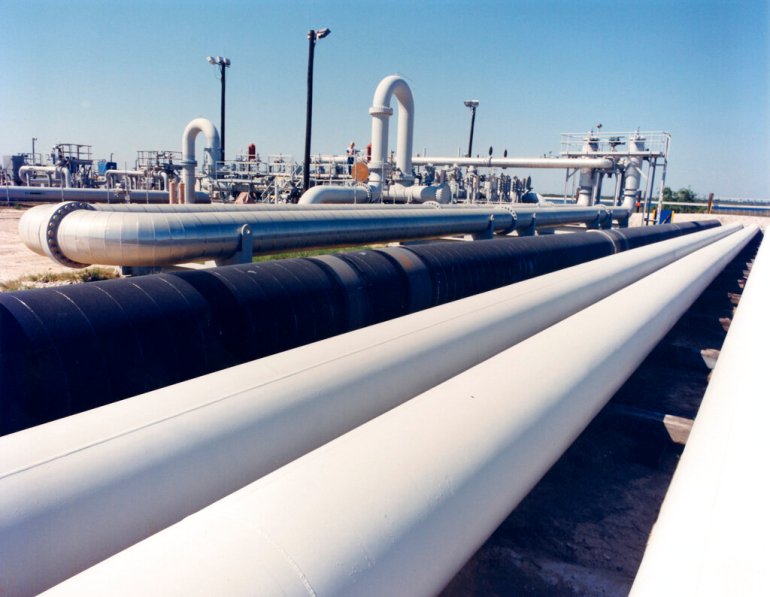Why Biden’s release of US oil reserves won’t end pain at the pump
Washington, DC – When Joe Biden announced that the United States would release more than 180 million barrels of oil from its strategic petroleum reserve over the next six months, the US president hailed it as an historic move that would lower fuel prices in the US.
The price at the pump has surged amid Russia’s war in Ukraine, which has led the US and other nations to bar oil and gas imports from Moscow and driven concerns over global energy supplies with inventories low and new production capacity limited.
Beginning early this week, Europe, Japan, and others are expected to join the US in releasing more from their reserves, adding about 30 to 50 million barrels to the world market over the same six-month period.
But while the Ukraine conflict pushes Biden and other world leaders to dip into their stockpiles, experts say the actual effect for consumers will be limited – and higher prices and more disruptions lay ahead. That is because with global supply-and-demand dictating prices, the barrels of Russian oil coming off the market will far exceed what is being put back in by the US and other nations.

“The Biden administration, by now, realises that as long as we have a Russia problem, oil prices are going higher,” said Robert McNally, president of the Washington-based consultancy Rapidan Energy Group.
“This is a big problem. It’s going to keep oil prices and therefore pump prices high and heading higher,” said McNally, a former energy adviser to President George W Bush.
McNally told Al Jazeera that the situation could also prove politically costly for Biden, who came into office pledging to move the United States away from fossil fuels, but now faces sharply rising fuel prices amid growing inflation in the US.
“The top priority of any official in Washington is always the next election. These guys are terrified about gasoline prices,” McNally said. “It’s just basic, but brutal, oil-market math and political survival.”
Global supplies
Russia is the world’s third largest oil producer, exporting 5 million barrels of crude a day, or about 12 percent of the global market, according to the International Energy Agency (IEA). About 60 percent of Russian oil goes to Europe and 20 percent goes to China, the IEA says.
The agency also has estimated that sanctions and private-sector decisions not to buy from Russia will take 2.85 million barrels of Russian oil per day off the world market. McNally and others think the reduction in supply will be even higher at about 3 million barrels a day.

“The way oil economics work is you have a globally priced commodity. So, a disruption anywhere impacts price everywhere,” said David Goldwyn, the head of Goldwyn Global Strategies and a former policy adviser in the Obama administration. “That’s the problem Biden is trying to fix.”
As the Russia-Ukraine crisis unfolded, Biden administration officials pleaded with domestic US producers and the Organization of the Petroleum Exporting Countries (OPEC) for more production. They were turned down by both.
In the US, most producers are already locked into long-term production plans and the industry is still recovering from the 2020 oil-price bust caused by the COVID-19 pandemic.
For their part, the 13 OPEC nations, after cutting output in response to the pandemic slowdown, are sticking with their hard-fought 2021 agreement that calls for increasing supply by 400,000 barrels a month.
“That’s the deal they struck, and they want to hold everyone to that deal. They’re rebuffing all pressure to deviate from it by going faster,” McNally said.
Move to renewables
When Biden announced the release of US oil reserves last week, he issued a second order promoting mining for the minerals and metals needed to produce electric vehicles – lithium, nickel, cobalt.
The move sends a signal that the president, who ran for office in 2020 pledging to curtail fossil fuel consumption and switch to cleaner sources of power, remains committed to shifting the US economy away from its reliance on oil.
But with inflation rising and gas prices surging, he faces hard political realities ahead of the November midterm elections if he wants to remain on course with those promises.
“Most voters are really worried more about the here and now. And with gas prices spiking, they’re putting less emphasis on carbon emissions and more emphasis on how much their pocketbooks are hurting,” Lee Ohanian, a professor of economics at the University of California, Los Angeles, told Al Jazeera. “Biden is walking a tightrope.”
Still, environmentalists and other experts say the war in Ukraine should hasten that energy transition – not hamper it.
“This crisis is a clear sign that we cannot depend on oil and gas exclusively, on fossil fuels exclusively. There is a clear need for renewable energy – wind and solar,” said Maria Ivanova, a professor of global governance at the University of Massachusetts Boston.
Biden’s first act as president in 2021 was to bring the US back into the Paris Climate Agreement and he has proposed sweeping measures in the US to incentivise the development of electric vehicles – much of which have yet to be adopted by Congress.
But his recent push for more domestic production amid the war in Ukraine marks “a significant turnaround” from those positions, Ivanova told Al Jazeera.
While she said she agrees that tapping oil reserves and encouraging more production is necessary for now, she urged Biden not to abandon the push towards renewables. “We need a fundamental rethink of our economic system and I do not think that going back to oil and gas works.”





